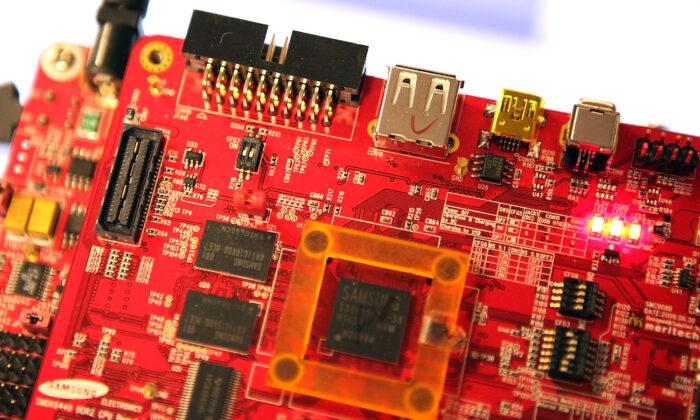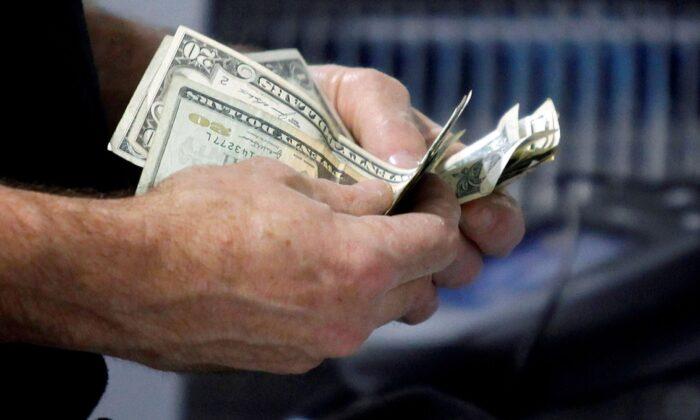Click past Apple’s shiny consumer marketing of its latest iPhone 13, and you’ll read in the specs that it brings some serious new technology to its hardware.
Its A15 Bionic chip has 15 billion transistors ... a new six‑core CPU with two performance and four efficiency cores ... a new five‑core GPU ... a new 16‑core Neural Engine.
Even though I’m not sure exactly what all that means, it sounds like some serious horsepower.
These days, we take our cell phones for granted. They’re so integrated into our daily lives that most people are never without them. We never think about exactly how dependent on them we’ve become. And more importantly, we never think about where those miraculous circuits that make them run come from.
The ‘Fab’
In the mid-1980s, during the birth of the microchip revolution, leaders in the industry designed and manufactured their own chips in what were known as fabrication plants or “fabs.” Jerry Sanders, the founder of Advanced Micro Devices, once famously boasted: “Real men have fabs.”But in 1987, Chinese engineer Morris Chang made a bet that would change. He believed that as semiconductor design advanced more and more, there would be a growing demand to outsource chip production. And with some financial help from the Taiwanese government, he founded the Taiwan Semiconductor Manufacturing Corp. (TSMC).
The company billed itself as the “Switzerland of semiconductors”—it wasn’t interested in the intellectual property behind the chips. All it did was manufacture them so individual tech companies didn’t have to.
Chang’s hunch paid off big time. Before long, Nvidia, Qualcomm, and others—even “real men have fabs” AMD—started outsourcing their chip production to TSMC. This resulted in a shift in the semiconductor balance of power.

According to Boston Consulting Group, while the United States still leads the world in chip design and intellectual property, with homegrown giants such as Intel, Nvidia, and Qualcomm, it now accounts for only 12 percent of the world’s chip manufacturing, down from 37 percent in 1990.
Today, the country of Taiwan accounts for 60 percent of the semiconductor industry’s revenue. TSMC accounts for 54 percent of that by itself.
And when you specialize in something, you get to be the best.
According to research firm Capital Economics, TSMC’s technology is so advanced that it now makes around 92 percent of the world’s most sophisticated chips, which have transistors that are less than one-thousandth the width of a human hair. Most of the roughly 1.4 billion smartphone processors worldwide are made by TSMC.
Dependent Like a Crack Addict
I don’t need to tell you that today, some 40 years later, semiconductors are in practically EVERYTHING. Your phone, your computer, your television, your car, your appliances ... everything.Under normal conditions, the world, especially the United States, has become dependent on access to a flow of semiconductors like a crack addict depends on his dealer.
But this dependence became glaringly evident during the pandemic lockdowns.
In June 2020, the House and the Senate introduced bills known as the “CHIPS for America Act” that would increase federal incentives—up to as much as $58 billion—to “support U.S. semiconductor manufacturing, research and development, and supply chain security.”
Why Push to Repatriate the Semiconductor Industry?
All you have to do is look around to see the kind of effects bottlenecks in the supply chains of anything can cause—skyrocketing prices. Energy, construction materials, food ... it’s all affected. The prices of used cars soared some 40 percent because new cars couldn’t be produced without semiconductors.Being tied to a single source is a recipe for trouble.
But if that single source is a tiny island nation that China happens to consider its own, that’s a recipe for disaster.
China and Taiwan have a centuries-long relationship that has evolved into Taiwan becoming a sovereign state. Today, China has made no secret that it wants Taiwan back.
China doesn’t want to reclaim Taiwan because of its glorious scenery—it wants the island for its industry.
And suppose the Chinese should make some move against Taiwan—à la Russia and Ukraine—regardless of the outcome. In that case, any disruption in the flow of semiconductors coming out of Taiwan could freeze the U.S. economy for years.
Hyperbole aside, this is a national security crisis.
Fortunately, TSMC has been looking to expand its production facilities.
It has begun construction in Arizona of a $12 billion chip facility. Reuters reported that the company plans to build six factories on that site over the next 10 to 15 years. Intel is planning to spend $20 billion on U.S.-based semiconductor factories.
These are positive developments. But it will still be years before any of these plants are running at total capacity.
And where investors are concerned, an outcome like this would turn a lot of industries on their heads. Investors would likely do best by looking to more defensive stocks. Companies with household names such as Procter & Gamble, Coca-Cola, and Walmart would fit that bill.





